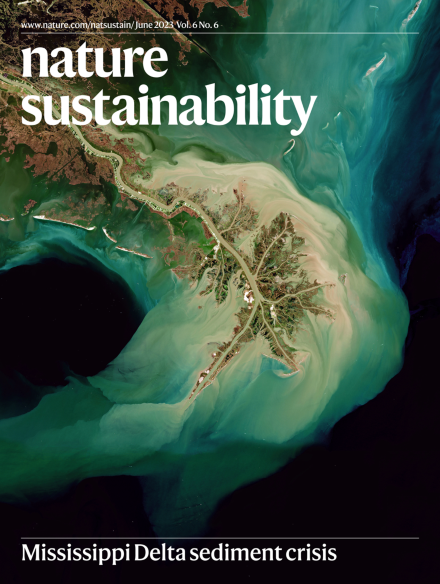Efficient outdoor thermal comfort via radiant cooling and infrared-reflective walls
IF 27.1
1区 环境科学与生态学
Q1 ENVIRONMENTAL SCIENCES
引用次数: 0
Abstract
As climate change accelerates, extreme heat events will intensify, threatening vulnerable populations experiencing dangerous heat outdoors. Active radiant cooling has recently emerged as a promising strategy for outdoor thermal comfort, at it offers cooling at a distance without the inefficiency of conditioning unconfined air. However, for radiant cooling structures to be effective, the overwhelming majority of their internal surfaces must be actively cooled, typically with visibly opaque panels, raising practicality and safety concerns. Here, we demonstrate that thermal comfort can be achieved in an outdoor cooling structure that lightly uses radiant cooling and amplifies this cooling effect using visibly transparent, infrared-reflective surfaces. This approach enables visibly open cooling structures that will be accepted by a wide range of communities. We first derive an analytical model that relates the mean radiant temperature to the proportion of cold and reflective surfaces in a structure. We then experimentally demonstrate such a structure, with human subject testing revealing a substantial enhancement in thermal comfort as experienced by occupants. Our results highlight how next-generation radiant cooling structures can use fewer actively cooled surfaces without compromising on cooling effectiveness. This is a practical approach to enabling thermal comfort outdoors in extreme heat conditions. Active radiant cooling is an emerging technology that consumes less energy than traditional air conditioning. This work demonstrates an outdoor radiant cooling structure incorporating infrared-reflective surfaces that delivers enhanced thermal comfort.

通过辐射冷却和红外反射墙实现高效的室外热舒适
随着气候变化的加速,极端高温事件将会加剧,威胁到户外经历危险高温的弱势群体。主动辐射冷却最近成为一种很有前途的室外热舒适策略,因为它提供了远距离冷却,而没有无限制空气调节的低效率。然而,为了使辐射冷却结构有效,它们的绝大多数内部表面必须主动冷却,通常使用明显不透明的面板,这增加了实用性和安全性问题。在这里,我们证明了热舒适可以在室外冷却结构中实现,该结构使用轻微的辐射冷却,并使用透明的红外反射表面来放大这种冷却效果。这种方法使可见的开放冷却结构能够被广泛的社区所接受。我们首先推导了一个解析模型,该模型将平均辐射温度与结构中冷表面和反射表面的比例联系起来。然后,我们通过实验展示了这样的结构,人体受试者测试揭示了居住者体验到的热舒适性的实质性增强。我们的研究结果强调了下一代辐射冷却结构如何在不影响冷却效果的情况下使用更少的主动冷却表面。这是一种在极端高温条件下实现室外热舒适的实用方法。主动辐射冷却是一项新兴的技术,它比传统的空调消耗更少的能源。这项工作展示了一种室外辐射冷却结构,结合红外反射表面,提供增强的热舒适性。
本文章由计算机程序翻译,如有差异,请以英文原文为准。
求助全文
约1分钟内获得全文
求助全文
来源期刊

Nature Sustainability
Energy-Renewable Energy, Sustainability and the Environment
CiteScore
41.90
自引率
1.10%
发文量
159
期刊介绍:
Nature Sustainability aims to facilitate cross-disciplinary dialogues and bring together research fields that contribute to understanding how we organize our lives in a finite world and the impacts of our actions.
Nature Sustainability will not only publish fundamental research but also significant investigations into policies and solutions for ensuring human well-being now and in the future.Its ultimate goal is to address the greatest challenges of our time.
 求助内容:
求助内容: 应助结果提醒方式:
应助结果提醒方式:


